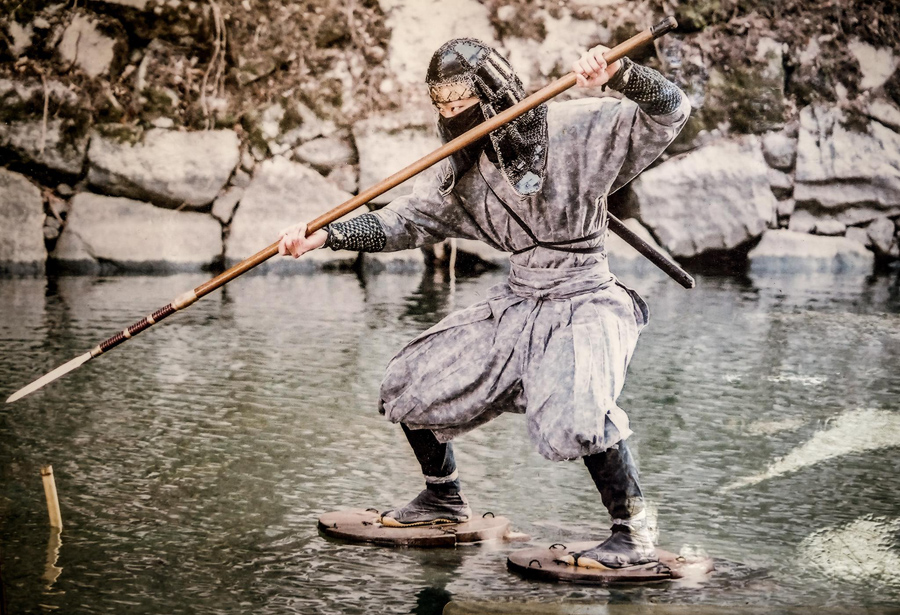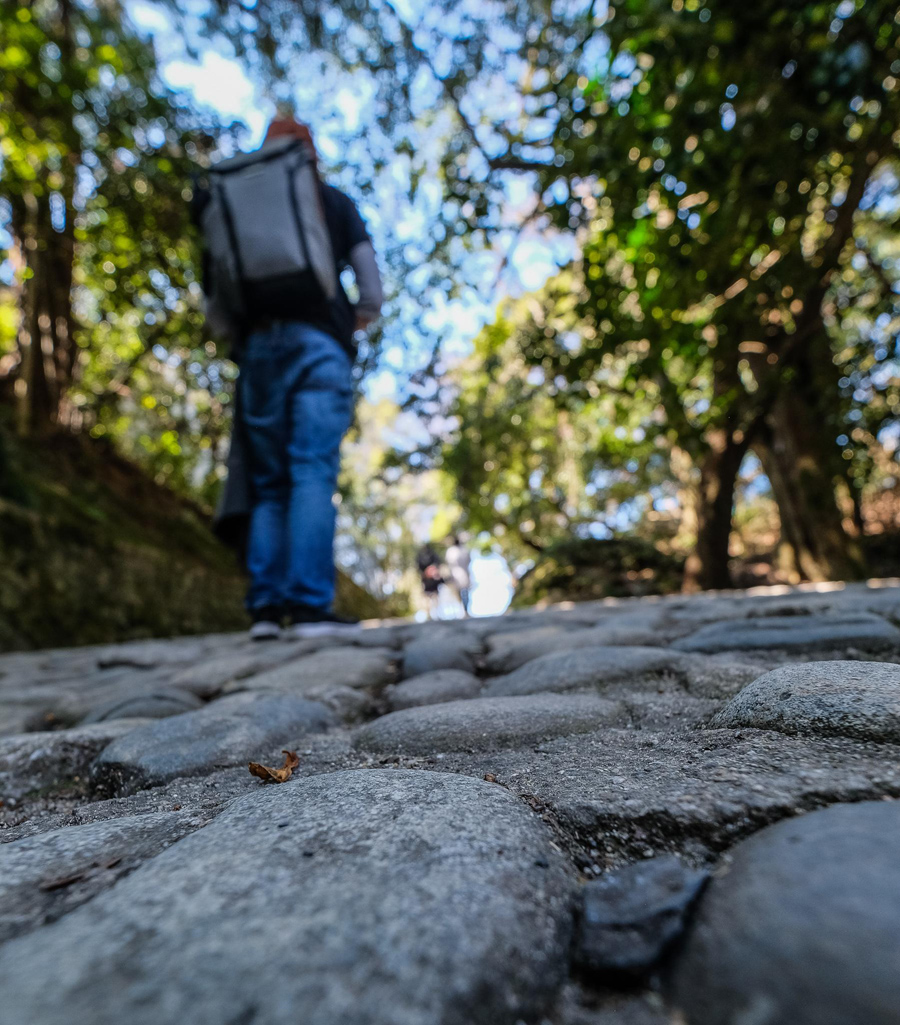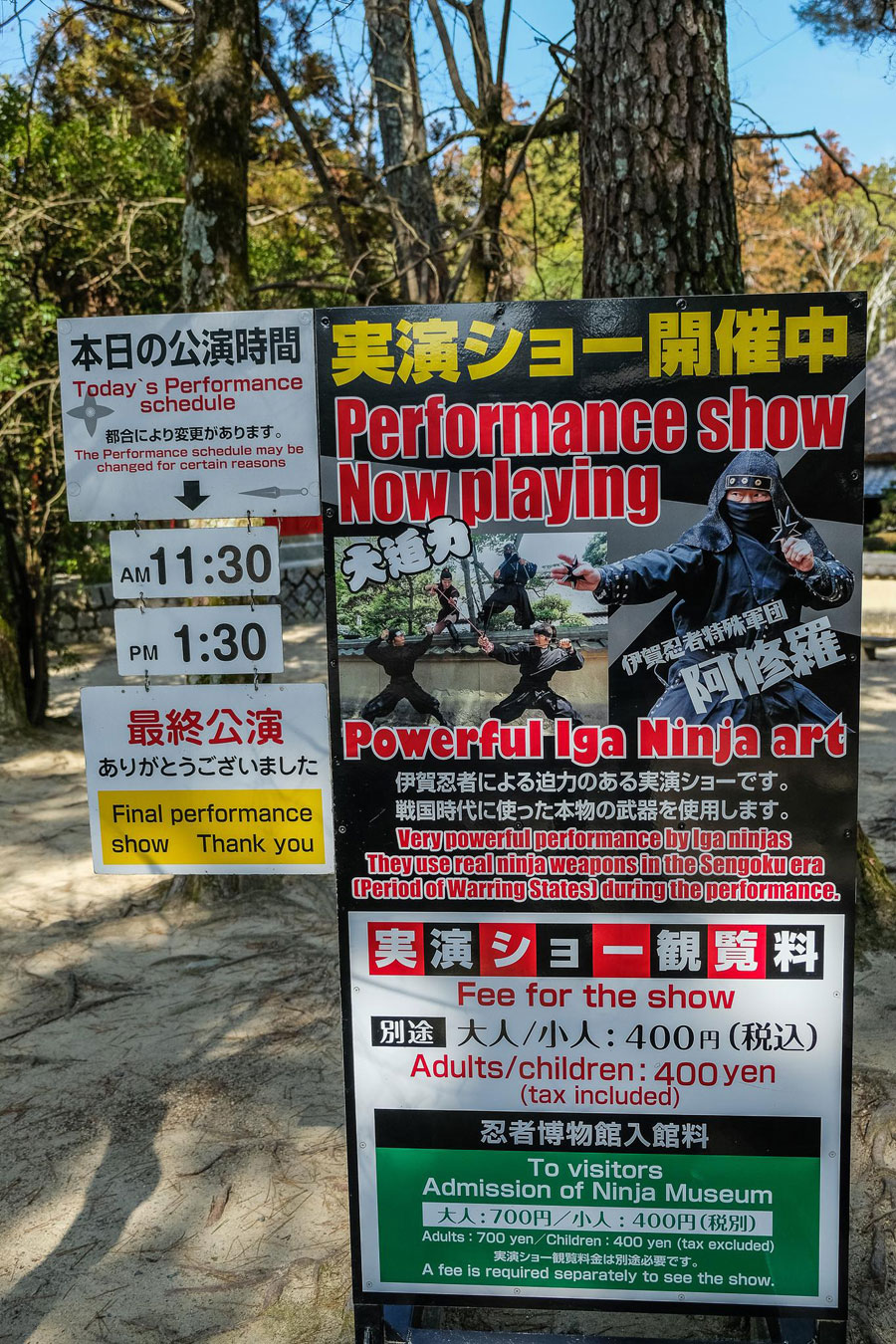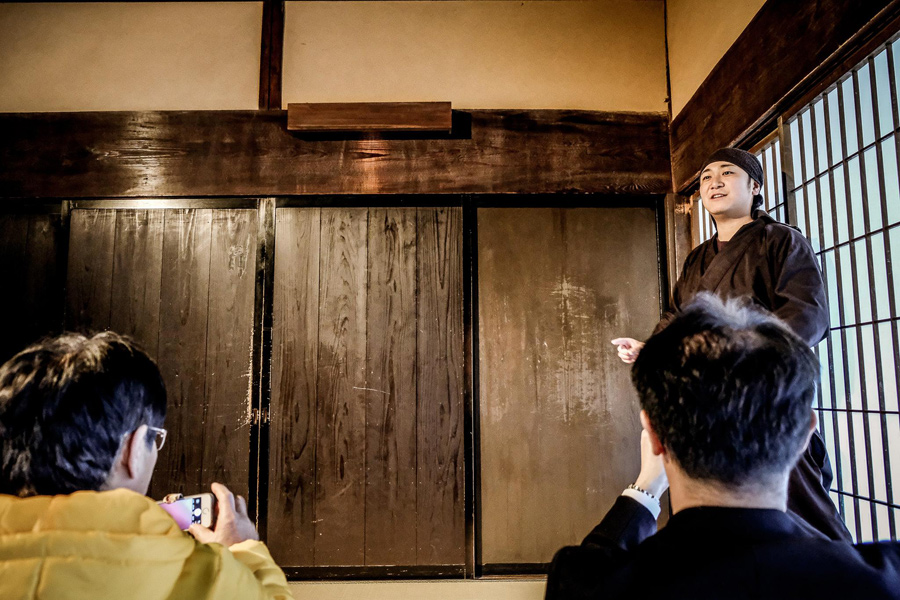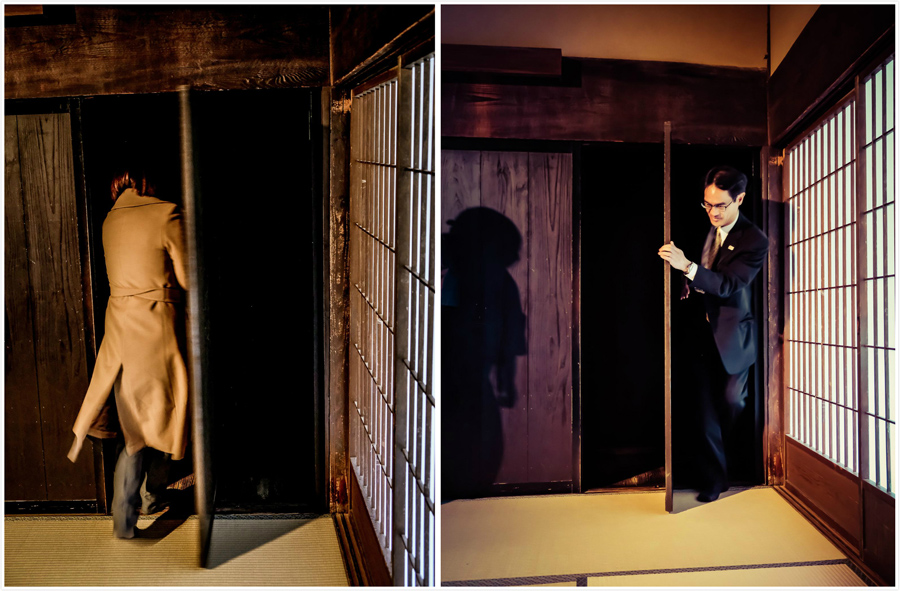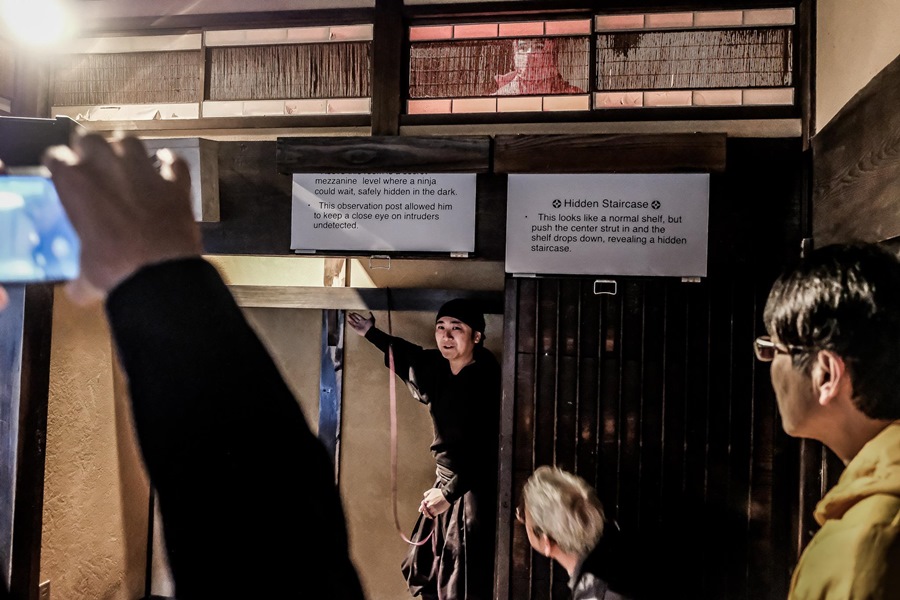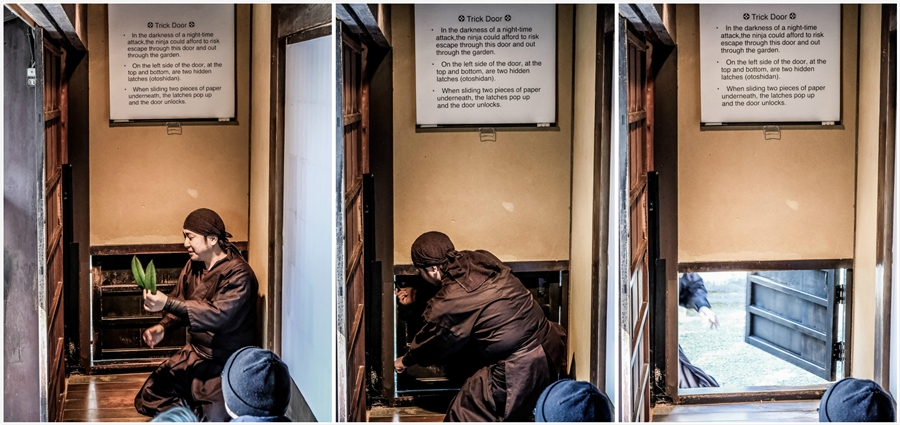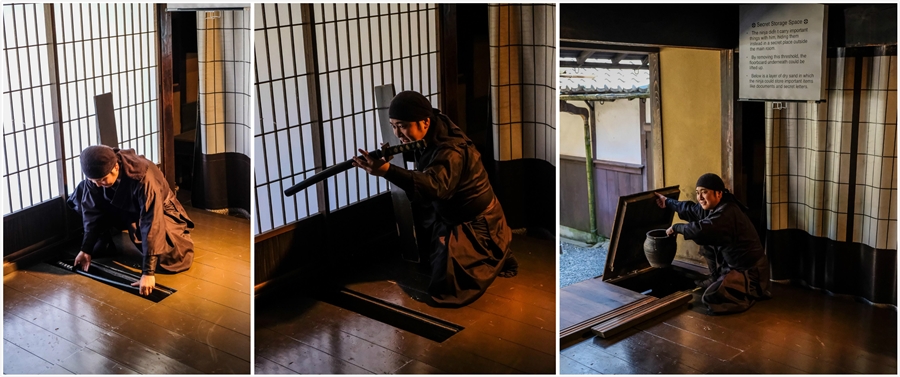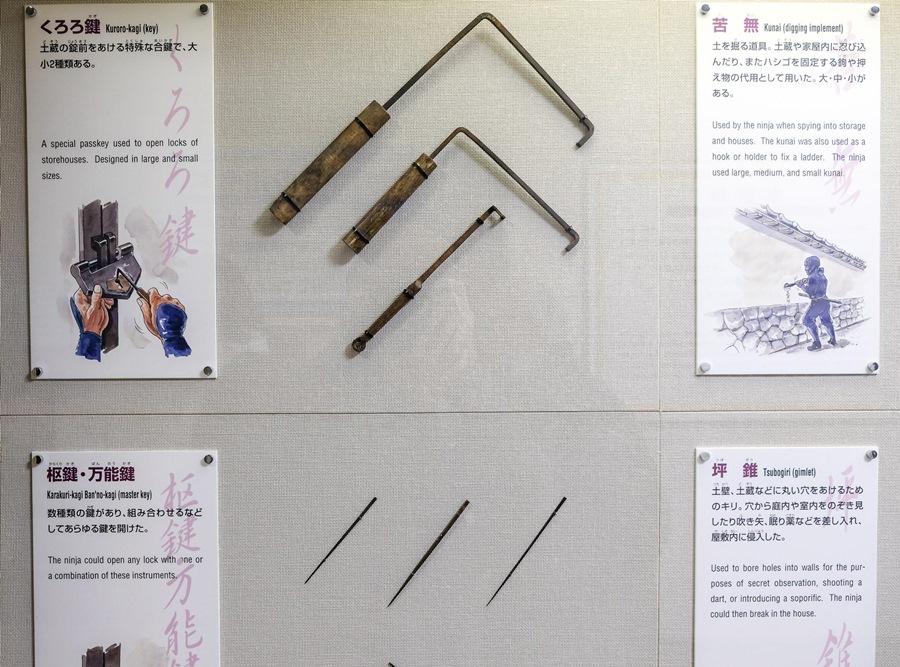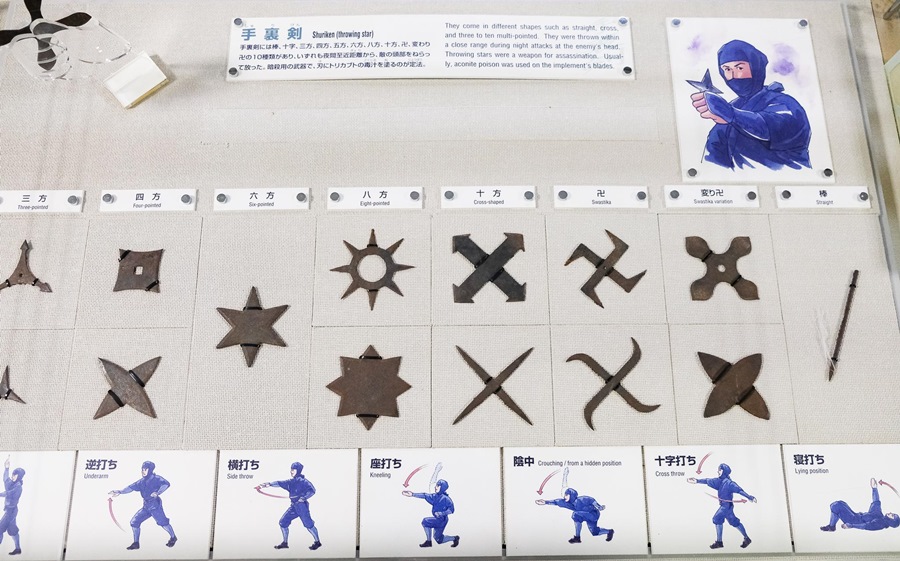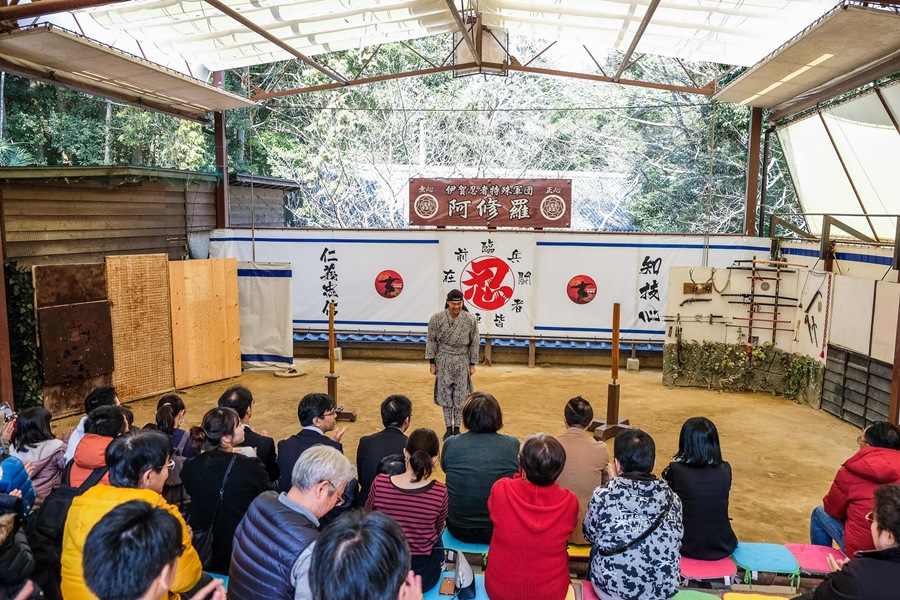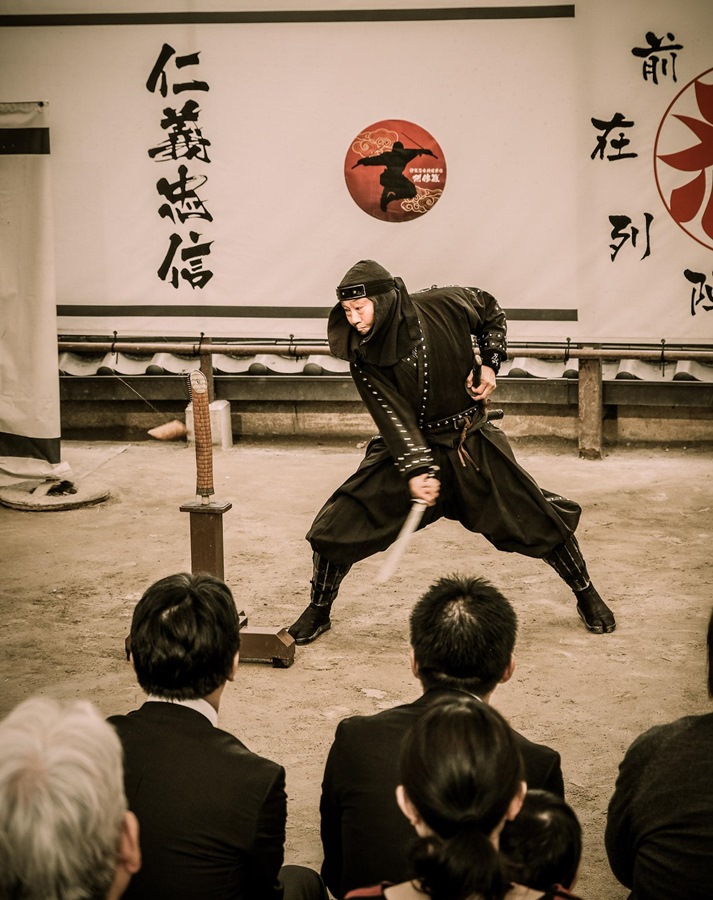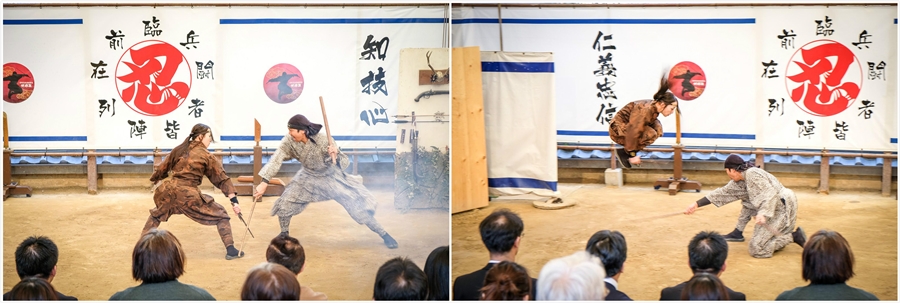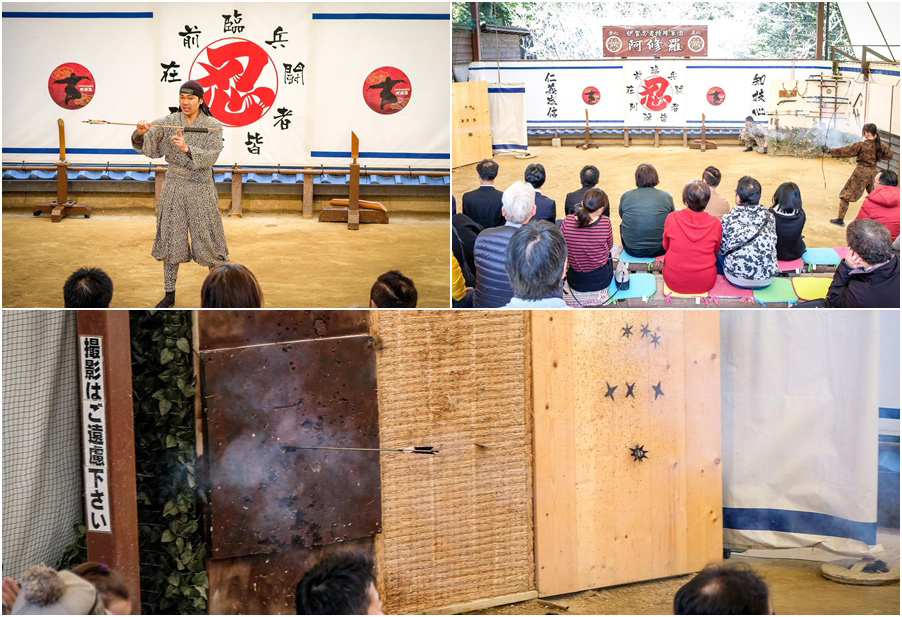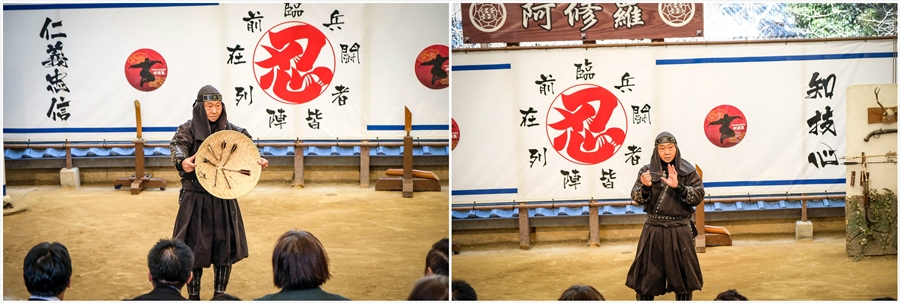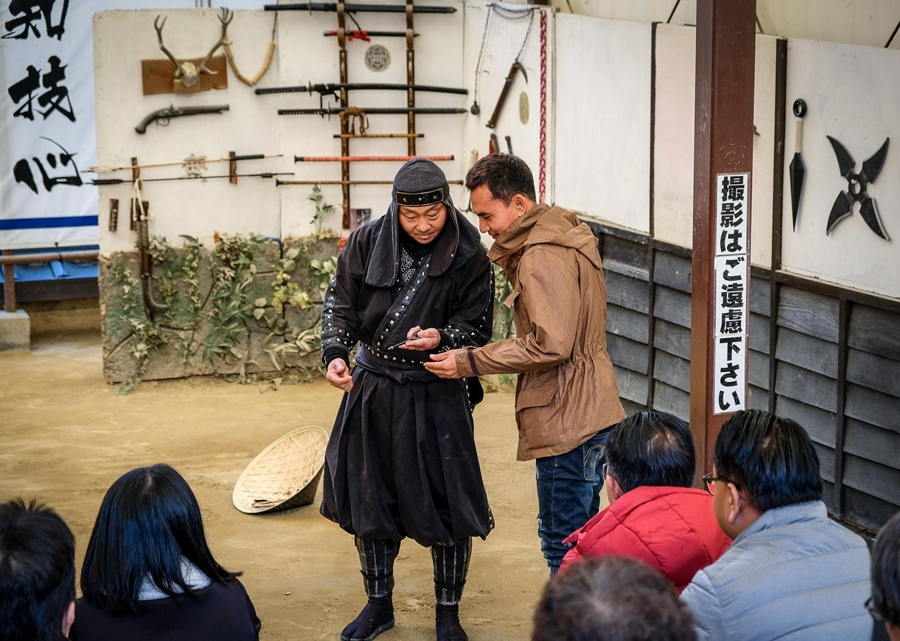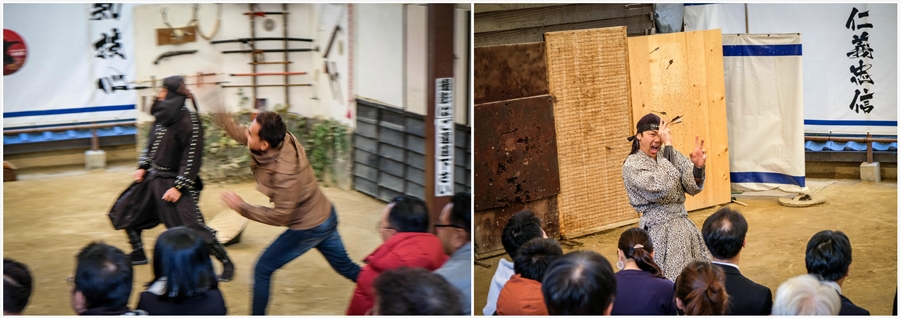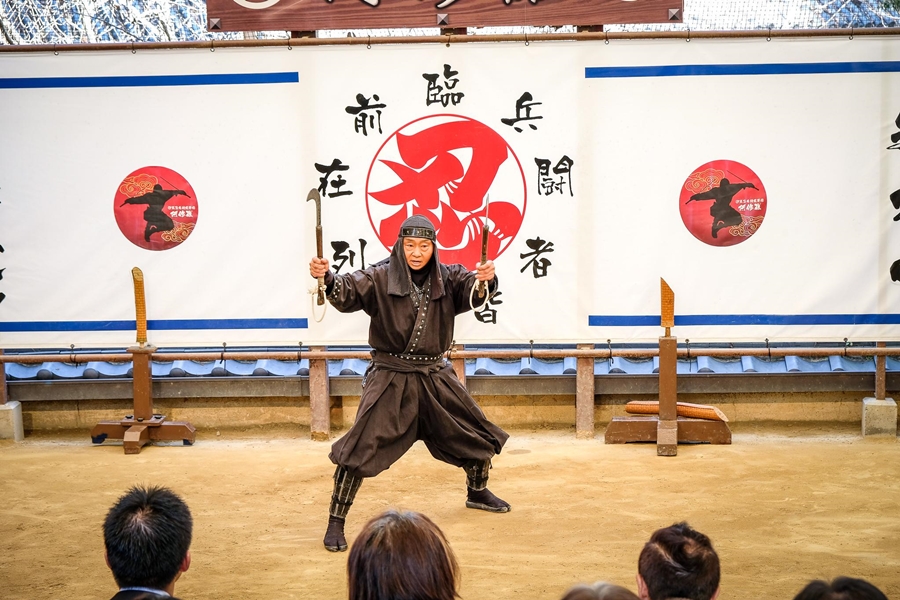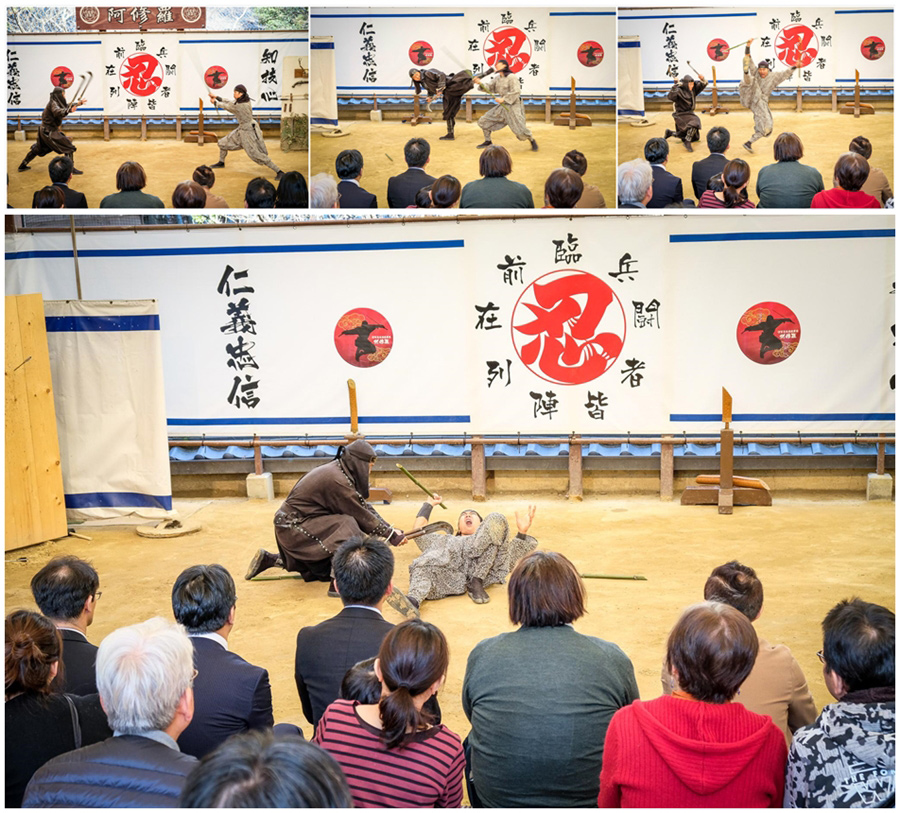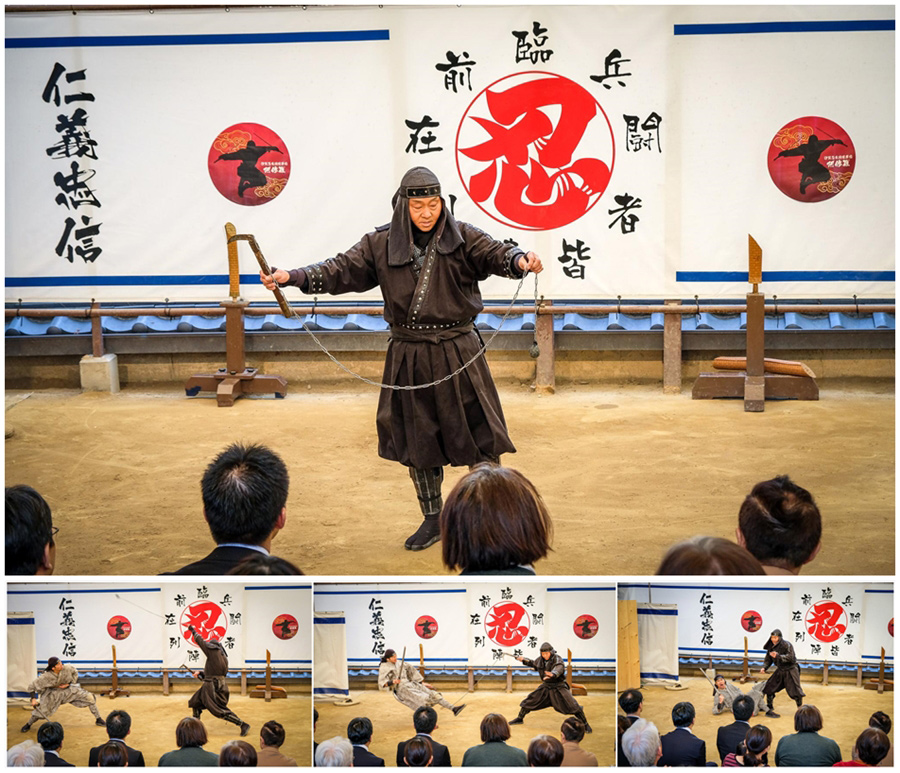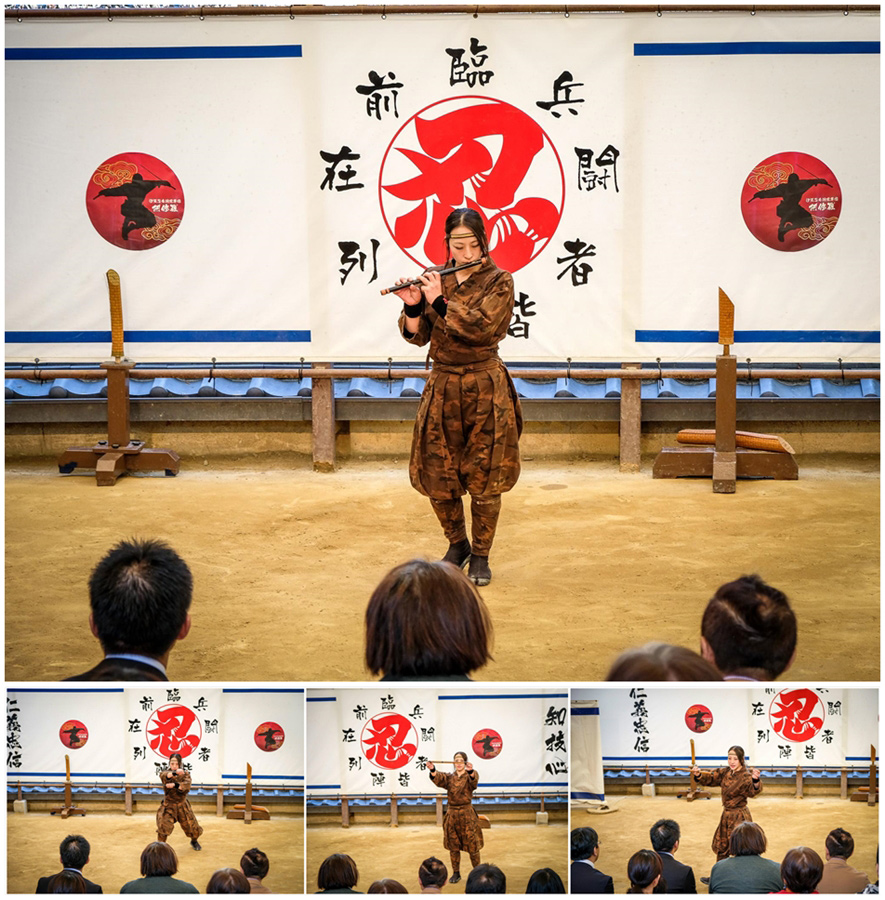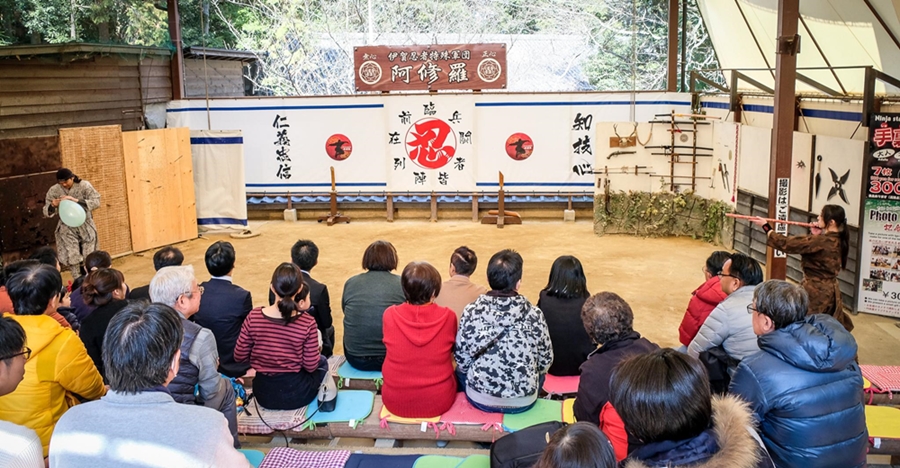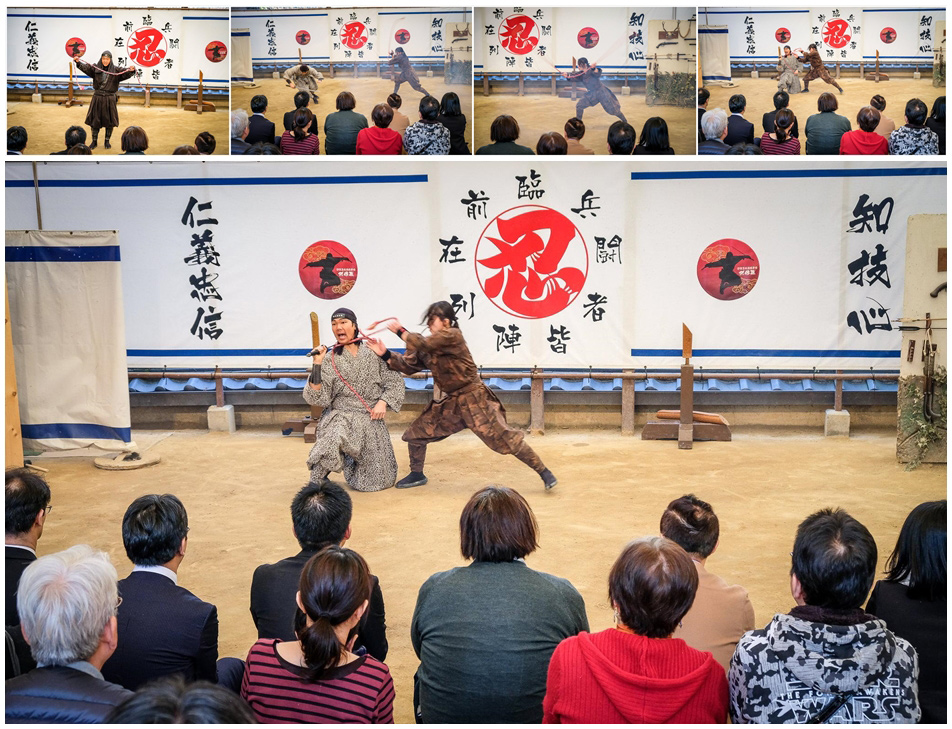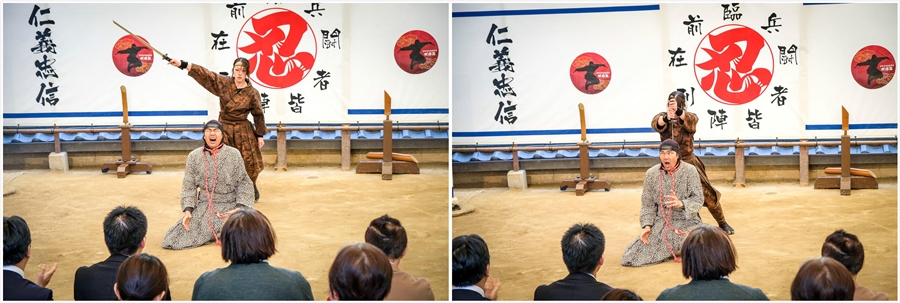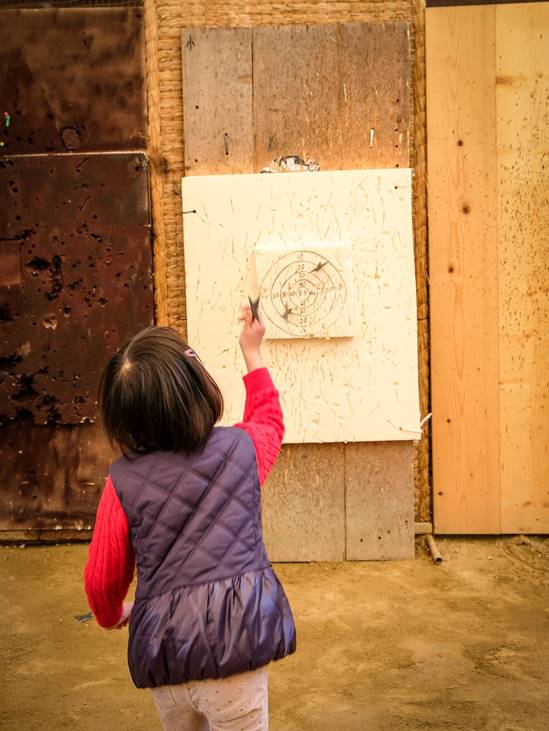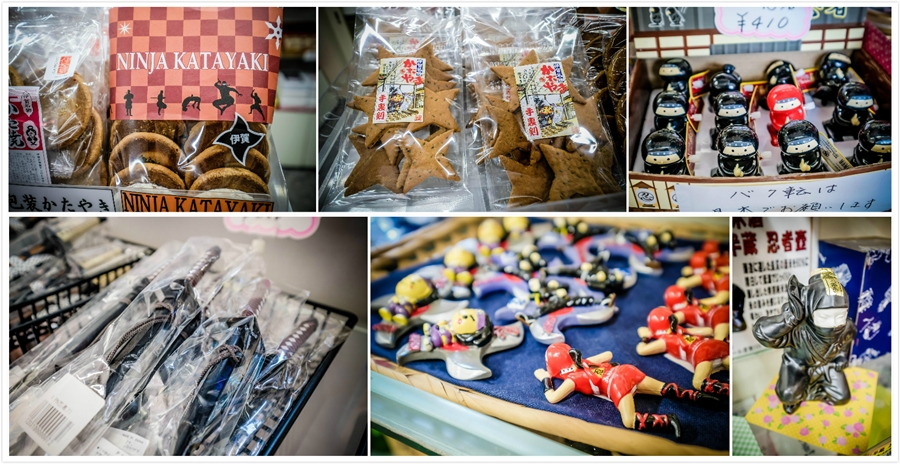Following in the Footsteps of the Ninja
|
|
Following in the Footsteps of the Ninja
A day exploring the Iga Ninja Museum
Introduction
Imposing figures in black, hiding in the shadows, and moving about with almost superhuman agility seem like nothing but cool stories told to tourists and movie-goers nowadays, but were once a very real part of feudal Japan. Japanese folklore states that the Ninja descended from a demon that was half man and half crow. Logic would dictate, however, that it seems more likely that the ninja slowly came about as an opposing force to their upper-class contemporaries, the Samurai, in early feudal Japan.
Brief History
Ninja(s) played important roles in Japanese history. Their heyday was between the 12th and 16th centuries, when there were many local wars, and the ability to spy, infiltrate and assassinate was highly valued.
While the true origins of Ninja are unclear. It is believed that the first ancient Ninja may have been yamabushi (“mountain priests”) who adapted the Sonshi, a Chinese martial arts manual, to their own purposes. There are references to ninja-like Shinobi in the Asuka Period (592-710) who were used to infiltrate enemy territory and described as “experts in the field of information gathering” and “masters of stealth and disguise.”
If any of that has piqued your interest, you should also know that Mie prefecture is the birthplace of the Iga clan, who helped Tokugawa Ieyasu (1543-1616) escape safely from Osaka in the turmoil that preceded the beginning of the Edo Period. Iga is a real place, and you can visit an interesting museum, a fascinating Ninja residence, and watch an action-packed Ninja show while you’re there.
|
|
Getting there
Taking a Highway Bus from Nagoya Meitetsu Bus Centre, it’s rather easy to get to Iga and delve into the world of the Ninja. The bus ride is just around 2hrs, and from the bus stop it’s just a short walk to the famous Ninja Museum and Residence.
I didn’t come all the way up here just to go to a Museum, however, so the first stop was getting a ticket to the Ninja performance a bit later.
|
|
There were two shows that day, 11:30am, and 1:30pm. Since there was a bit of time before the show started, I made a quick stop at the souvenir shop. Of course, everything was Ninja-themed: cookies, crackers, snacks - even the Sake. Then it was off to the residence.
Entering the Ninja residence is just like entering any other old house in Japan - or so it seems. Reflecting the Ninja’s ideology, there are many hidden secrets all around the house.
The main Tatami Room, for instance, has a hidden revolving door to a little hideout in the wall for Ninja to patiently wait for the right time, and then swiftly jump out to dispose of any intruders or unwelcome guests.
|
|
|
|
Of course, Ninja are not only known for their assassination skills, but were also used as spies.
Unless you have eyes like a hawk, you’d never see the cleverly hidden alcove above the Tatami Room, from which Ninja can easily spy on the “guests” in the house.
The alcove is accessible via a hidden ladder in the closet.
|
|
The next room features a hidden getaway in the outer wall, from which Ninja can make a swift escape should the situation call for it. (Note to self: make sure to add this feature to my next home, hahah).
|
|
In addition to the features above, there are also hidden weapon stashes in the floor and a hidden cabinet near the sliding door.
|
|
The mystical, almost ethereal quality of the Ninja has always fascinated me, so it was a great treat to finally see behind the mythology and experience the reality.
Seeing all these interesting features in the house was really impressive and brought back my childhood dream of actually becoming a Ninja. Probably most young children (at least in my generation) fantasize about that in some way or another, so actually being in the real birthplace of the Iga clan was truly special.
After the house tour, we were ushered into a corridor beneath, which opened into a small museum showcasing some of the daily life items used by the Ninja, such as swords, sickles, grappling hooks, and even equipment for opening locks.
|
|
The museum's collection includes ancient ninjutsu writings analyzed scientifically, along with ancient ninjutsu weapons. The museum has audiovisuals, models and extensive static displays of the weaponry and techniques employed by ninja. There are over 400 ninja tools on display, including Shuriken actually used in the time of the ninja.
|
|
As exciting as it was to see that, the real excitement was about to start - the Ninja Performance.
We entered the small stage area full of anticipation and after finding a seat to enjoy the show, were quickly greeted by the announcer, who explained to us that they were going to give us a quick tour of the weapons and fighting styles of these enigmatic warriors of old.
The first performance showed how sharp the typical ninjatō (忍者刀), ninjaken (忍者剣), or shinobigatana (忍刀) swords are, by cutting a rolled up bamboo mat. The swords went through the mat like butter. It was absolutely amazing to see such cutting power, and I certainly wouldn’t want to be on the wrong side of that sword swing.
|
|
|
|
After the cutting demonstration came several fighting demonstrations, including the Sai (Kanji), simple bamboo sticks, Shuriken throwing, and surprisingly, a “jet” arrow, which is lit towards the tip end and like a bottle-rocket, is propelled rapidly towards its unfortunate target.
|
|
|
|
|
|
The next part of the show involved several hidden throwing weapon demonstrations involving the audience. In typical Japanese style, of course there was an infusion of comedy thrown in. :D
|
|
|
|
|
|
More Weapons were shown off after that, including the Sickle (Kama), a Bamboo Staff, and a devastating looking Chain Sickle with a weighted ball-end.
|
|
|
|
|
|
The Ninja were not just men, however. Female Ninja held a special place within their ranks and were employed just as much as men for stealth and especially assassination missions.
Two of their favourite weapons were a flute that houses a dagger inside, and a blowgun to dispose of enemies / targets from afar.
|
|
|
|
More weapon demonstrations followed, including one of the more peculiar weapons, namely a rope for ensnaring their opponents.
|
|
|
|
At the end of the performance, the audience members were encouraged to try their hand at throwing some Shuriken at a target, which, of course, was a big hit with the young ones.
Could this be the next future Ninja?
|
|
Going to the Museum was a great experience with an exceptional display of past ninja culture, a guided tour, and a captivating display of ninja weapons, techniques, and martial arts. All this, combined with some beautiful scenery, was definitely worth the trip to Iga. Highly recommended and two very enthusiastic thumbs up - fun for the whole family!
Souvenirs
A big part of going somewhere and having an interesting experience in Japan are the souvenirs to bring back to your friends, family, and co-workers, and there were plenty of interesting souvenirs to be had here as well, ranging from snacks, to little figurines, to letter openers, even Ninja-shaped drink bottles.
|
|
Of course, there were plenty of Ninja Weapon souvenirs to be had, including Knives, Swords, Kama, and of course all kinds of Shuriken.
|
|
So, whether you’re into the history, or the mystery of the Ninja, there are plenty of things to do and to see at the Iga Ryu Ninja Museum. It was very interesting to see all the informative displays, read about little Ninja tidbits here and there, and explore the gift shops for finding just the right gift to bring back, but the highlight for me was definitely the entertaining show. I was always fascinated by Ninja, so I, for one, will definitely be back during the upcoming Ninja Festival during the Golden Week holiday period.
Till next time, folks!
〜*〜*〜*〜*〜*〜*〜*〜*〜*〜*〜*〜*〜*〜*〜*〜*〜*〜*〜
↓↓For more information or to purchase, click here! ↓↓
Discover Central Japan ~みつけたび中部~
〜*〜*〜*〜*〜*〜*〜*〜*〜*〜*〜*〜*〜*〜*〜*〜*〜*〜*〜
- 117-13-1 Ueno Marunouchi, Iga-shi, Mie
- 9:00 a.m. - 5:00 p.m. * Entry is closed at 4:30 p.m.
- 0595-23-0311
- http://www.iganinja.jp/?page_id=837




